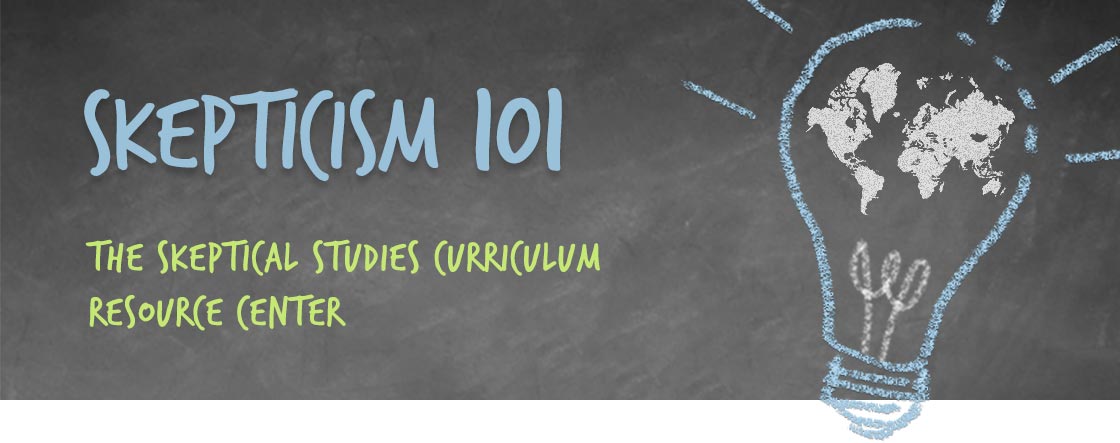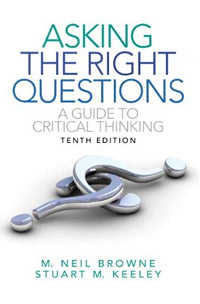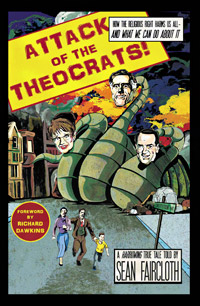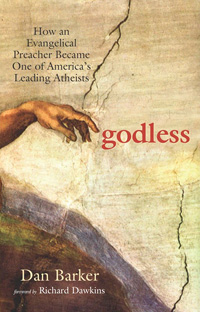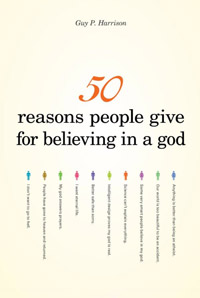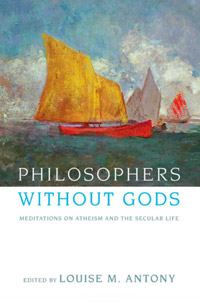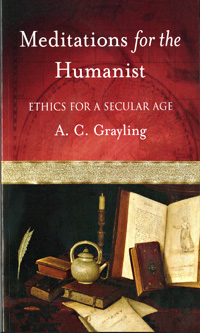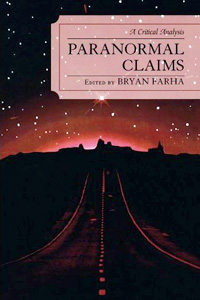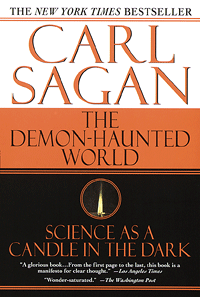You Are Browsing Resources
for the Academic Discipline of:
philosophy
This PowerPoint is part of a course titled, “Science Skepticism & Weird Behavior.”
SCIENCE, THEORY, AND PARADIGM SHIFTS
There are three lectures in this series, they are intended to educate students about the nature of science and the power of natural explanations. This is accomplished through the concept of the Paradigm Shift. The discussion begins with non-scientific views of nature and then follows the development of scientific views and how/why they changed over many hundreds of years. This post concerns the third lecture in the series.
Examples of paradigm shifts covered in the lecture series include:
- the shift from supernatural to nature interpretations of comets.
- the shift from astrology (Ptolemaic) to astronomy (Copernican revolution).
- the development of Copernican cosmology to a synthesis called Newtonian physics.
- the shift from Newtonian physics into Relativity Theory.
Lecture 3 – PARADIGM SHIFT 3
This lecture is a continuation of the previous lecture where the paradigm shift from Newtonian physics to the theory of relativity is discussed. The lecture ends with a discussion of the cosmic microwave background and what the various differences in temperature could mean.
DOWNLOAD THIS RESOURCE
(16.5 MB Powerpoint Presentation)
Lecture 1 – PARADIGM SHIFT 1
You can find the first lecture in the series here.
Lecture 2 – PARADIGM SHIFT 2
You can find the second lecture in the series here.
This PowerPoint is part of a course titled, “Science Skepticism & Weird Behavior.”
SCIENCE, THEORY, AND PARADIGM SHIFTS
There are three lectures in this series, they are intended to educate students about the nature of science and the power of natural explanations. This is accomplished through the concept of the Paradigm Shift. The discussion begins with non-scientific views of nature and then follows the development of scientific views and how/why they changed over many hundreds of years. This post concerns the second lecture in the series.
Examples of paradigm shifts covered in the lecture series include:
- the shift from supernatural to nature interpretations of comets.
- the shift from astrology (Ptolemaic) to astronomy (Copernican revolution).
- the development of Copernican cosmology to a synthesis called Newtonian physics.
- the shift from Newtonian physics into Relativity Theory.
Lecture 2 – PARADIGM SHIFT 2
This lecture introduces the concept of scientific paradigm shifts, the concept of empiricism, the concept of anomalies and the concept of synthesis. These concepts are discussed in the context of a paradigm shift called the Copernican and the Newtonian Revolutions.
DOWNLOAD THIS RESOURCE
(20.6 MB Powerpoint Presentation)
Lecture 1 – PARADIGM SHIFT 1
You can find the first lecture in the series here.
Lecture 3 – PARADIGM SHIFT 3
You can find the third lecture in the series here.
This PowerPoint is part of a course titled, “Science Skepticism & Weird Behavior.”
SCIENCE, THEORY, AND PARADIGM SHIFTS
There are three lectures in this series, they are intended to educate students about the nature of science and the power of natural explanations. This is accomplished through the concept of the Paradigm Shift. The discussion begins with non-scientific views of nature and then follows the development of scientific views and how/why they changed over many hundreds of years. This post concerns the first lecture in the series.
Examples of paradigm shifts covered in this lecture series include:
- the shift from supernatural to nature interpretations of comets.
- the shift from astrology (Ptolemaic) to astronomy (Copernican revolution).
- the development of Copernican cosmology to a synthesis called Newtonian physics.
- the shift from Newtonian physics into Relativity Theory.
Lecture 1 – PARADIGM SHIFT I
This lecture demonstrates the power of natural explanations over supernatural ones. The main topic is about the various ways that people throughout history have interpreted comets when they appeared in the sky. The lecture beings with a discussion about what we currently know about comets and then transitions into what ancients believed.
Two examples are given initially whereby major players in history misinterpreted the appearance of a famous comet (Halley’s comet) as a sign from god to fulfill their destiny. The first example was Genghis Cohn who began his invasion of the west after comet Halley appeared in the sky, the second was William the Conqueror who invaded England in 1066 after seeing comet Halley appear in the sky.
A third and final example is given whereby a person saw Halley’s comet in the sky but didn’t leap to a supernatural conclusion. This person was Sir Issac Newton and his interpretation of the comet was quite different because he assumed that the comet was natural. By asking simple, empirical, questions about the nature of the comet, Newton, with the help of Edmund Halley, was able to make a prediction the comet would one day return. Comet Halley did return just as Newton and Halley predicted thus proving that comets were not supernatural but are 100% natural just like the planets and other celestial bodies.
DOWNLOAD THIS RESOURCE
(6.3 MB Powerpoint Presentation)
Lecture 2 – PARADIGM SHIFT 2
You can find the second lecture in the series here.
Lecture 3 – PARADIGM SHIFT 3
You can find the third lecture in the series here.
This course was taught at Chapman University during the spring 2013 semester as an undergraduate course.
Excerpt from Syllabus
This course addresses the evolutionary origins of morality, the developmental psychology of moral emotions, the historical course of moral development throughout the history of civilization, and the forces that have bent the arc of the moral universe toward truth, justice, freedom, and prosperity.
Students will look at how the arc of the moral universe bends toward truth, justice, freedom, and prosperity thanks to science the type of thinking that involves reason, rationality, empiricism, and skepticism. The Scientific Revolution led by Copernicus, Galileo, and Newton was so world-changing that thinkers in other fields consciously aimed at revolutionizing the social, political, and economic worlds using the same methods of science. This led to the Age of Reason and the Enlightenment, which in turn created the modern secular world of democracies, rights, justice, and liberty.
DOWNLOAD THIS RESOURCE
(209 kb PDF)
This book was required reading for Stephen Sekula, John Cotton, and Randall Scalise’s course, “The Scientific Method: Critical & Creative Thinking” taught at Southern Methodist University.
Used in a variety of courses in various disciplines, Asking the Right Questions helps students bridge the gap between simply memorizing or blindly accepting information, and the greater challenge of critical analysis and synthesis. Specifically, this concise text teaches students to think critically by exploring the components of arguments–issues, conclusions, reasons, evidence, assumptions, language–and on how to spot fallacies and manipulations and obstacles to critical thinking in both written and visual communication. It teaches them to respond to alternative points of view and develop a solid foundation for making personal choices about what to accept and what to reject. —Publisher
BUY THIS BOOK
from Amazon
The following three assignments are from the course, “Philosophy 41: Critical Thinking” taught at Los Medanos College in fall 2011 by Jennifer Saito.
Paradigm Shifts
In this assignment students must, “… present and analyze a false paradigm using [the] error theories and concepts [talked about in class] to explain how people got it so wrong.”
DOWNLOAD THIS RESOURCE
(90 kb PDF)
Truth Detection
In this assignment the student’s job is to, “…become a modern truth-detective and thoroughly analyze an extraordinary claim [he/or she is] skeptical about in contemporary society. The ultimate goal is to determine whether [he/or she] think[s] there is any truth behind the claim, to analyze the persuasive techniques which are used to convince the public of its validity and to give advice to the reader about how to avoid being duped.”
DOWNLOAD THIS RESOURCE
(393 kb PDF)
Metamorphosis
This is the students’ final assignment. Students must, “present and thoroughly analyze a personal case study wherein [they] got something important really, really wrong and how this error affected [their] identity.”
DOWNLOAD THIS RESOURCE
(118 kb PDF)
This book was required reading for Dr. Innes Mitchell’s course, “Perspectives on Atheism” taught at St. Edwards University during spring 2012.

The religious right is gaining enormous power in the United States, thanks to a well-organized, media-savvy movement with powerful friends in high places. Yet many Americans — both observant and secular — are alarmed by this trend, especially by the religious right’s attempts to erase the boundary between church and state and re-make the U.S. into a Christian nation. But most Americans lack the tools for arguing with the religious right, especially when fundamentalist conservatives claim their tradition started with the Framers of The Constitution. Fighting Words is a a tool-kit for arguing, especially for those of us who haven’t read the founding documents of this nation since grade school. Robin Morgan has assembled a lively, accessible, eye-opening primer and reference tool, a “verbal karate” guide, revealing what the Framers and many other leading Americans really believed — in their own words — rescuing the Founders from images of dusty, pompous old men in powdered wigs, and resurrecting them as the revolutionaries they truly were: a hodgepodge of freethinkers, Deists, agnostics, Christians, atheists, and Freemasons — and they were radicals as well.—Amazon
BUY THIS BOOK
from Amazon
This book was required reading for Dr. Innes Mitchell’s course, “Perspectives on Atheism” taught at St. Edwards University during spring 2012.
While much of the public debate in the United States over church-state issues has focused on the construction of nativity scenes in town squares and the addition of “under God” to the Pledge, Faircloth, who served ten years in the Maine legislature and is now Director of Strategy & Policy for the U.S. Richard Dawkins Foundation, moves beyond the symbolism to explore the many ways federal and state legal codes privilege religion in law.
Faircloth speaks around the nation on the Constitution, separation of church and state, and secular strategy. Faircloth also served for a decade in the Maine legislature, successfully spearheading over thirty laws. In his last term in office, Faircloth was elected Majority Whip by his caucus colleagues. —Amazon
BUY THIS BOOK
from Amazon
This book was required reading for Dr. Innes Mitchell’s course, “Perspectives on Atheism” taught at St. Edwards University during spring 2012.
Conversions on the road to Damascus are for those who hear voices and fall prey to delusions and who would be better off seeking professional help. Much more valuable in the human story are the reflections of intelligent and ethical people who listen to the voice of reason and who allow it to vanquish bigotry and superstition. This book is a classic example of the latter. —Christopher Hitchens
My kids are in the process of learning about literature, and a rule of thumb they’ve picked up concerns how to recognize the protagonist of a Story: it’s the character who undergoes the greatest transformation. This makes sense, because one of the hardest things we confront is the need to change. By this criterion, in the enormous story of what we all do with our lives, Dan Barker is one of the most interesting and brave protagonists I know. Godless is a fascinating memoir, a tour of one distressing extreme of religiosity, a handbook for debunking theism. But most of all, it is a moving testimonial to one man’s emotional and intellectual rigor in acclaiming critical thinking.—Robert Sapolsky
BUY THIS BOOK
from Amazon
This book was required reading for the following course: “Atheism” taught by Pete Boghossian.
Many books that challenge religious belief from a sceptical point of view take a combative tone that is almost guaranteed to alienate believers or they present complex philosophical or scientific arguments that fail to reach the average reader. Journalist Guy P Harrison argues that this is an ineffective way of encouraging people to develop critical thinking about religion. In this unique approach to scepticism regarding God, Harrison concisely presents fifty commonly heard reasons people often give for believing in a God and then he raises legitimate questions regarding these reasons, showing in each case that there is much room for doubt.Whether you’re a believer, a complete sceptic, or somewhere in between, you’ll find Harrison’s review of traditional and more recent arguments for the existence of God refreshing, approachable, and enlightening.
From religion as the foundation of morality to the authority of sacred books, the compelling religious testimony of influential people, near-death experiences, arguments from “Intelligent Design”, and much more, Harrison respectfully describes each rationale for belief and then politely shows the deficiencies that any good sceptic would point out.As a journalist who has travelled widely and interviewed many highly accomplished people, quite a number of whom are believers, Harrison appreciates the variety of belief and the ways in which people seek to make religion compatible with scientific thought. Nonetheless, he shows that, despite the prevalence of belief in God or religious belief in intelligent people, in the end there are no unassailable reasons for believing in a God. For sceptics looking for appealing ways to approach their believing friends or believers who are not afraid to consider a sceptical challenge, Harrison’s book makes for very stimulating reading.—Amazon
BUY THIS BOOK
from Amazon
This book was required reading for the following course: “Atheism” taught by Pete Boghossian.
Atheists are frequently demonized as arrogant intellectuals, antagonistic to religion, devoid of moral sentiments, advocates of an “anything goes” lifestyle. Now, in this revealing volume, nineteen leading philosophers open a window on the inner life of atheism, shattering these common stereotypes as they reveal how they came to turn away from religious belief.
These highly engaging personal essays capture the marvelous diversity to be found among atheists, providing a portrait that will surprise most readers. Many of the authors, for example, express great affection for particular religious traditions, even as they explain why they cannot, in good conscience, embrace them. None of the contributors dismiss religious belief as stupid or primitive, and several even express regret that they cannot, or can no longer, believe. Perhaps more important, in these reflective pieces, they offer fresh insight into some of the oldest and most difficult problems facing the human mind and spirit. For instance, if God is dead, is everything permitted? Philosophers Without Gods demonstrates convincingly, with arguments that date back to Plato, that morality is independent of the existence of God. Indeed, every writer in this volume adamantly affirms the objectivity of right and wrong. Moreover, they contend that secular life can provide rewards as great and as rich as religious life. A naturalistic understanding of the human condition presents a set of challenges–to pursue our goals without illusions, to act morally without hope of reward–challenges that can impart a lasting value to finite and fragile human lives.
Collectively, these essays highlight the richness of atheistic belief–not only as a valid alternative to religion, but as a profoundly fulfilling and moral way of life. —Amazon
BUY THIS BOOK
from Amazon
This book was required reading for Martin Bridgstock’s course, “Skepticism, Science & the Paranormal” taught at Griffith University during the spring 2011 semester.
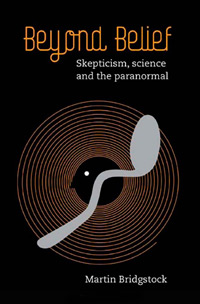
Whether ghosts, astrology or ESP, up to 80 per cent of the population believes in one or more aspects of the paranormal. Such beliefs are entertaining, and it is tempting to think of them as harmless. However, there is mounting evidence that paranormal beliefs can be dangerous – cases of children dying because parents rejected orthodox medicine in favour of alternative remedies, and ‘psychics’ who trade on the grief of the bereaved for personal profit and gain. Expenditure on the paranormal runs into billions of dollars each year. In Beyond Belief: Skepticism, Science and the Paranormal Martin Bridgstock provides an integrated understanding of what an evidence-based approach to the paranormal – a skeptical approach – involves, and why it is necessary. Bridgstock does not set out to show that all paranormal claims are necessarily false, but he does suggest that we all need the analytical ability and critical thinking skills to seek and assess the evidence for paranormal claims. —Amazon
BUY THIS BOOK
from Amazon
This book was required reading for the following courses: (1) “Science, Skepticism & Weird Behavior” taught by Bryan Lovelace, (2) “Skepticism & the Scientific Worldview” taught by Travis Knowles, (3) “Skepticism, Science & the Paranormal” taught by Martin Brigdstock, and (4) “The Scientific Method: Critical & Creative Thinking” taught by Stephen Sekula et al.
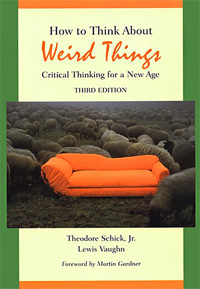
This brief text helps students to think critically, using examples from the weird claims and beliefs that abound in our culture to demonstrate the sound evaluation of any claim. It explains step-by-step how to sort through reasons, evaluate evidence, and tell when a claim (no matter how strange) is likely to be true. The emphasis is neither on debunking nor on advocating specific assertions, but on explaining principles of critical thinking that enable readers to evaluate claims for themselves. The authors focus on types of logical arguments and proofs, making How to Think about Weird Things a versatile supplement for logic, critical thinking, philosophy of science, or any other science appreciation courses.—Amazon
James Randi calls this textbook, “the most powerful, comprehensive, and readable collections of examples, explanations and caveats that I could have ever hoped for.” A library must!—Skeptic
BUY THIS BOOK
from Amazon
This book was required reading for Dr. Innes Mitchell’s course, “Perspectives on Atheism” taught at St. Edwards University during spring 2012.
“Magnanimity is in short supply,” writes A. C. Grayling is this wonderfully incisive book, “but it is the main ingredient in everything that makes the world a better place” And indeed Meditations for the Humanist: Ethics for a Secular Age is itself a generous, insightful, wide-ranging, magnanimous inquiry into the philosophical and ethical questions that bear most strongly on the human condition.
Containing nearly fifty linked commentaries on topics ranging from love, lying, perseverance, revenge, racism, religion, history, loyalty, health, and leisure, Meditations for the Humanist does not offer definitive statements but rather prompts to reflection. These brief essays serve as springboards to the kind of thoughtful examination without which, as Socrates famously claimed, life is not worth living. As Graying notes in his introduction, “It is not necessary to arrive at polished theories on all these subjects, but it is necessary to give them at least a modicum of thought if one’s life is to have some degree of shape and direction.” The book is divided into three sections-Virtues and Attributes, Foes and Fallacies, and Amenities and Goods-and within these sections essays are grouped into related clusters. But each piece can be read alone and each is characterized by brevity, wit, and a liveliness of mind that recalls the best of Montaigne and Samuel Johnson. Grayling’s own perspective on these subjects is broadened and deepened by liberal quotations from Sophocles and Shakespeare to Byron, Twain, Proust, Simone de Beauvoir, Martin Luther King, Jr., and many others.
For those wishing to explore ethical issues outside the framework of organized religious belief, Meditations for the Humanist offers an inviting map to the country of philosophical reflection.—Amazon
BUY THIS BOOK
from Amazon
This book was required reading for Dr. Bryan Farha’s course, “Sociology of Belief” taught at Oklahoma City University during spring 2011.
Published in April of 2007, this academic text features articles regarding paranormal, extraordinary, or fringe-science claims. It logically examines the claims of astrology; psychic ability; alternative medicine and health claims; after-death communication; cryptozoology; and faith healing, all from a skeptical perspective. Paranormal Claims is a compilation of some of the most eye-opening articles about pseudoscience and extraordinary claims that often reveal logical, scientific explanations, or an outright scam. These articles, steeped in skepticism, teach critical thinking when approaching courses in psychology, sociology, philosophy, education, or science. —Amazon
BUY THIS BOOK
from Amazon
This book was required reading for the following courses: (1) “Skepticism 101: How to Think Like a Scientist Without Being a Geek” taught by Michael Shermer, (2) “Weird Science” taught by John Donovan, (3) “The Scientific Method: Critical & Creative Thinking” taught by Stephen Sekula et al., and (4) “Studies in Behavior: Critical Thinking” taught by Evelyn Buday.
“The great astronomer and science writer challenges New Agers and explains social phenomena like UFOs, alien abductions, recovered memories, satanic cults, witch crazes, hallucinations, and how to detect baloney. This is Sagan’s most popular book among skeptics, filled with quotable maxims, popular among college professors as a supplemental text for students, but a classic for everyone who cares about living in a sane and safe world without superstition.” —Skeptic
“Eminent Cornell astronomer and bestselling author Sagan debunks the paranormal and the unexplained in a study that will reassure hardcore skeptics but may leave others unsatisfied. To him, purported UFO encounters and alien abductions are products of gullibility, hallucination, misidentification, hoax and therapists’ pressure; some alleged encounters, he suggests, may screen memories of sexual abuse. He labels as hoaxes the crop circles, complex pictograms that appear in southern England’s wheat and barley fields, and he dismisses as a natural formation the Sphinx-like humanoid face incised on a mesa on Mars, first photographed by a Viking orbiter spacecraft in 1976 and considered by some scientists to be the engineered artifact of an alien civilization. In a passionate plea for scientific literacy, Sagan deftly debunks the myth of Atlantis, Filipino psychic surgeons and mediums such as J.Z. Knight, who claims to be in touch with a 35,000-year-old entity called Ramtha. He also brands as superstition ghosts, angels, fairies, demons, astrology, Bigfoot, the Loch Ness monster and religious apparitions. (Feb.)” —Publishers Weekly
BUY THIS BOOK
from Shop Skeptic
This course was taught at the University of North Texas.
Excerpt from Syllabus
In this class students will utilize scientific critical thinking to examine the causes of various strange phenomena, including alleged paranormal events, magic, superstition, mystery illness, bogus therapies and pseudoscience. The main goal is to teach students how to think about weird things when they encounter them.
Learning Goals
By the end of this course, students should be able to do:
- Describe 3 scientific paradigm shifts that have occurred within the last 1000 years and explain why they happened.
- Describe the importance of temporal and spatial contiguity in relation to perceiving weird things.
- Describe how the environment selects superstitious behavior in organisms. o Describe the role that uncertainty plays in why people believe weird things.
- Describe the “law of non-contradiction” and why it must be true.
- Describe differences and similarities between logical and physical possibilities.
- Describe at least two principles of critical thinking. o Define “knowledge” and how it relates to evidence & belief.
- Demonstrate commonsense skepticism by proportioning your belief to the evidence.
- Define the “criteria of adequacy” and use them evaluate competing theories.
DOWNLOAD THIS RESOURCE
(188 kb PDF)
This course was taught at Claremont Graduate University during the spring 2012 semester.
Excerpt from Syllabus
Evolution, Economics, and the Brain is a doctoral-level Transdisciplinary Course designed to address large issues in which students employ knowledge and research protocols from many different disciplines to shed new light on specific problems. One of the books assigned—Steven Pinker’s The Better Angels of Our Nature—integrates evolution, history, anthropology, sociology, psychology, economics, and political science to explain a single phenomenon: the decline of violence. It is a model work in transdisciplinary integration.
A transdisciplinary and integrative overview of evolutionary theory, evolutionary economics, and neuroscience (“Evolution, Economics, and the Brain”) that includes a brief history and science of evolutionary theory, along with the evolution-creationism controversy and how it evolved in the context of American history and culture. As well, the application of evolutionary theory will be considered in its integration into psychology, anthropology, ethics, and economics. The course also includes an introduction to behavioral neuroscience and will focus on teaching students how new findings in the brain sciences can inform their work in the social sciences and humanities. For example: How reward acquisition is affected by risk; Why humans are typically risk-averse and when they are not; Hyperbolic discounting of future rewards; How interpersonal trust is built and maintained; How “rational” vs. “irrational” decisions are made; The basis for cooperation and aggression; The reason people punish others; The role of hormones in decisions; The basis for social norms or ethics; The sense of justice; The basis for love and hate and how these effect decisions; War and peace; Human nature; The decline of violence; The humanitarian and rights movements; and more.
DOWNLOAD THIS RESOURCE
(338 kb PDF)
This PowerPoint is part of a course titled, “Perspectives on Atheism“.
This presentation introduces the “Critical Perspectives” segment of the course. Basic standards for objectively evaluating evidence are discussed, before introducing the Baylor Four-God typology based on US regional differences. The work of Karen Armstrong is used to discuss how concepts of God evolved into patriarchal monotheisms, marginalizing female divinities. Dan Dennett’s concept of “Belief in Belief” is introduced before addressing Richard Carrier’s four proofs justifying why he is not a Christian. The presentation concludes with the Epicurean refutation of God and a refutation of the Kalam Cosmological Argument.
DOWNLOAD THIS RESOURCE
(77 MB Powerpoint Presentation)
This PowerPoint is part of a course titled, “Perspectives on Atheism“.
This presentation introduces the rhetorical/cultural approach to studying Atheism. Two rationales for the course are provided: (1) Aligns with the critical thinking and truth seeking mission of the University; and (2) Provides students with an opportunity for personal understanding and clarifying values. A way of discreetly disclosing the identity of the Instructor as an Atheist, Tea Pot Agnostic, Freethinker, and Humanist is given. The presentation concludes by providing an overview of the course organization and a preview of topics.
DOWNLOAD THIS RESOURCE
(107 MB Powerpoint Presentation)
NEXT PAGE →

